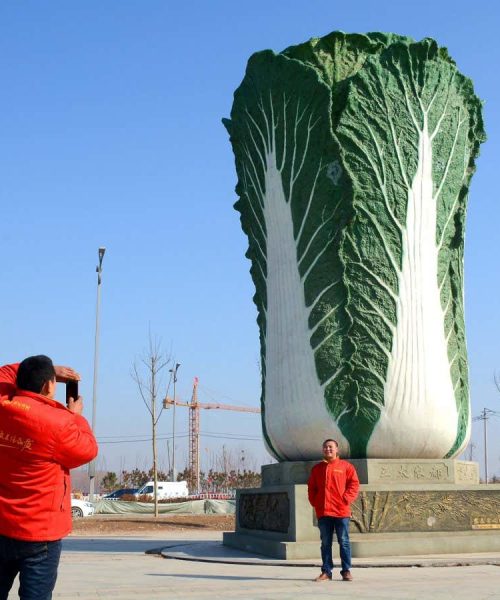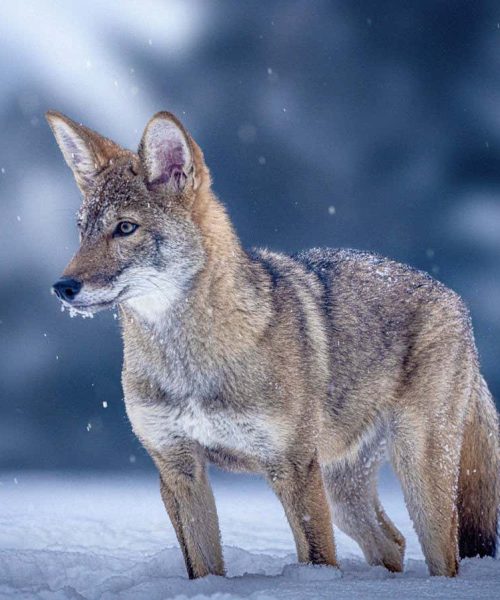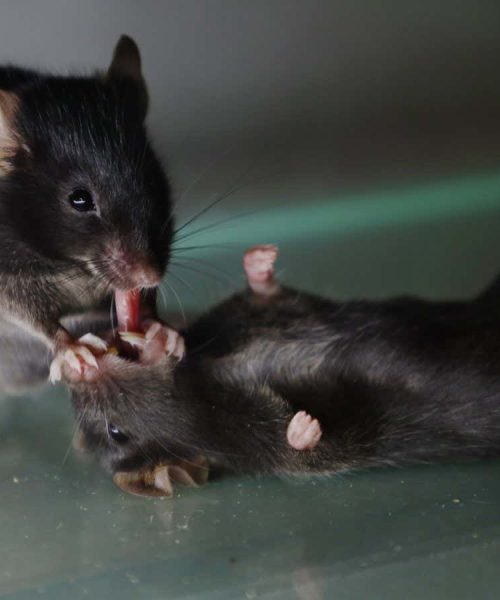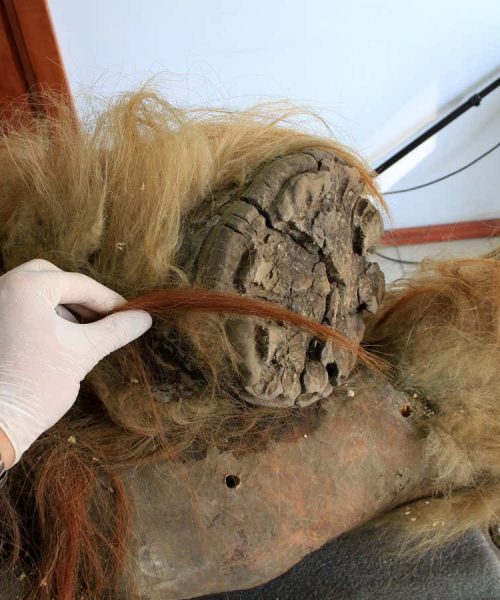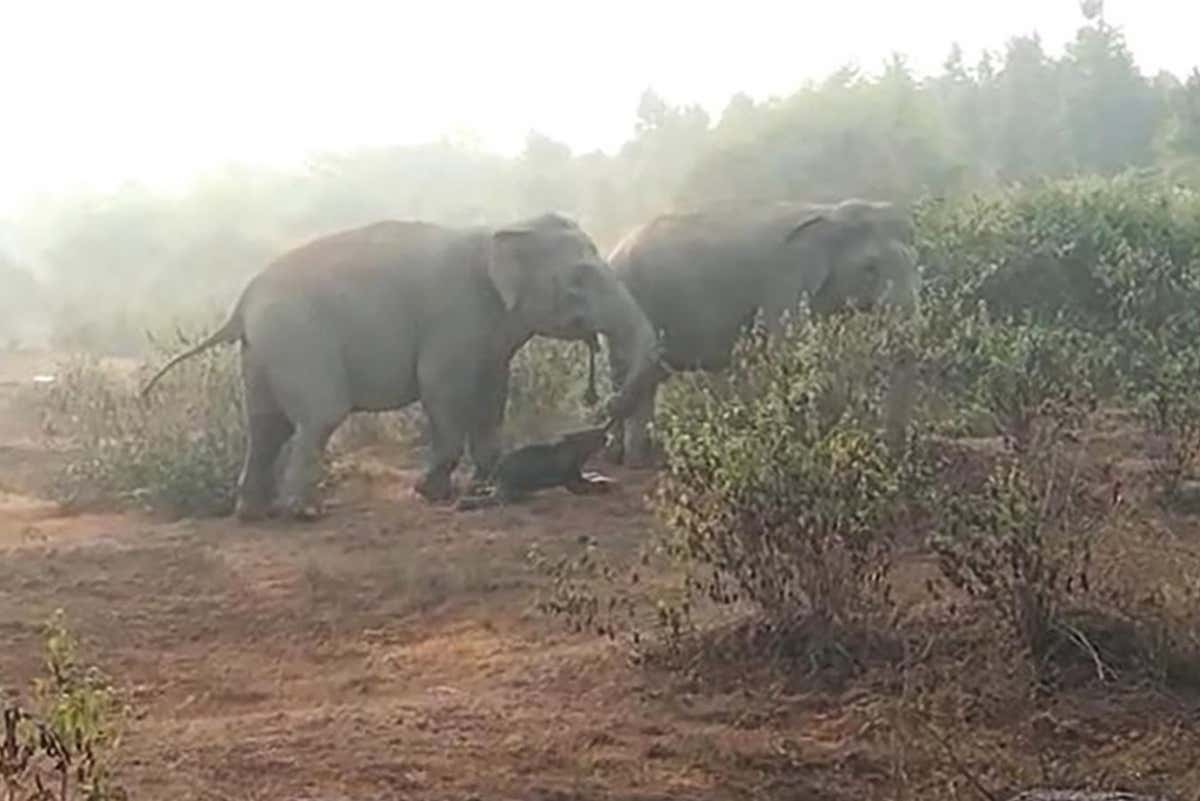
An elephant pulling a dead calf on a tea estate in north Bengal, India
Parveen Kaswan and Akashdeep Roy
Asian elephants have been documented deliberately burying the bodies of their calves in the first scientific report of such behaviour in this species.
Five buried calves were discovered in drainage ditches on tea-growing estates in north Bengal, India, all with their feet and legs protruding from the ground.
Advertisement
Footprints and dung of various sizes indicate that herd members of all ages contributed to each burial. Night guards at the estates reported loud elephant vocalisations, sometimes lasting as long as 30 to 40 minutes, before the herd left the area.
Akashdeep Roy at the Indian Institute of Science Education and Research in Pune and Parveen Kaswan at the Indian Forest Service suggest that these trumpeting sounds may signify mourning and that the herds showed “helping and compassionate behaviour” during the burials.
“Calf burials are extremely rare events in nature,” says Roy.
They were surprised that the calves were buried feet up, but if the herd collectively buried each calf, this is the most accessible position to place the carcass into the drainage ditch, says Roy. As social animals, it may be most important to the elephants to bury the calf’s head, he says.
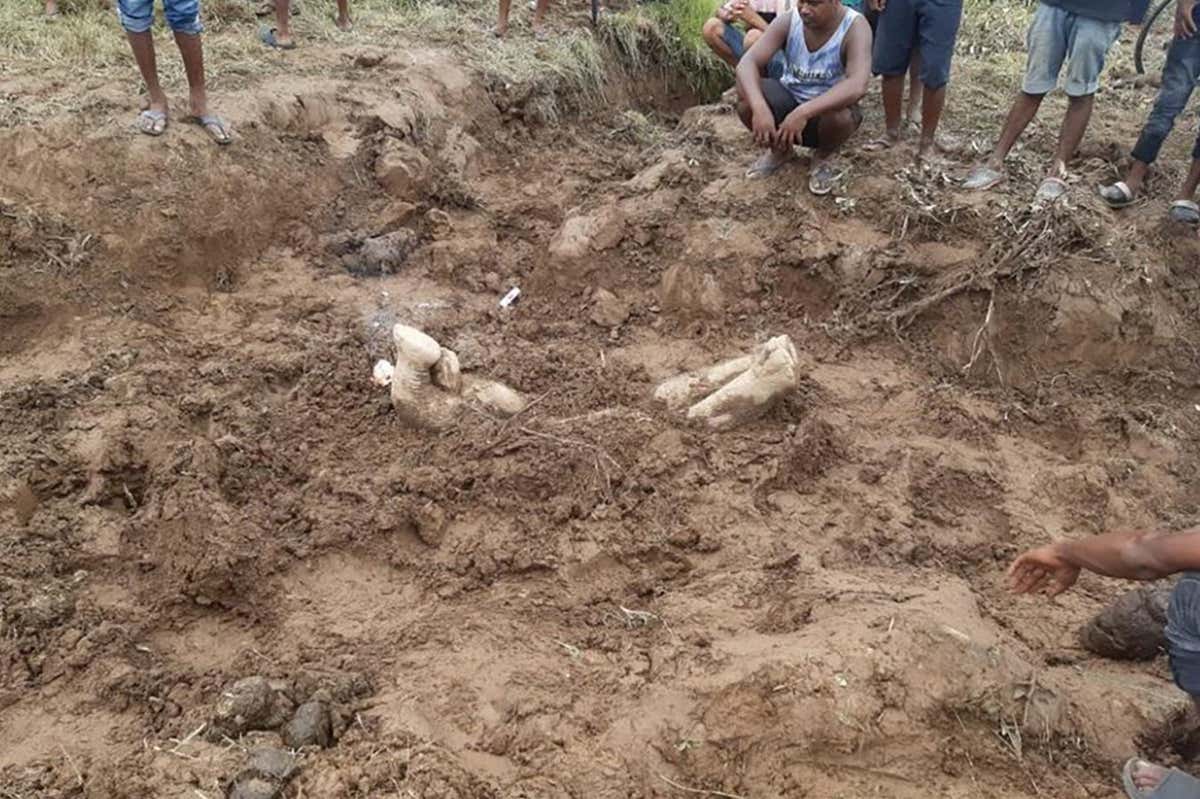
An elephant calf buried on a tea estate, with its feet protruding from the ground
Parveen Kaswan and Akashdeep Roy
The calves’ bodies were later exhumed and examined. They ranged in age from 3 months to a year old, and a number of them were malnourished and had infections. Bruising along each calf’s back suggests they were dragged or carried long distances to the burial sites.
African bush elephants (Loxodonta africana) have been observed covering dead bodies with vegetation and returning to these locations later. However, the Asian elephants (Elephas maximus) in this study generally avoided returning to the burial sites, instead using alternative pathways.
“These observations offer impressive evidence of the social complexities of elephants,” says Chase LaDue at the Oklahoma City Zoo and Botanical Garden. “Others have noted that elephants appear to behave in unique ways towards their deceased relatives, [but] this paper is the first to describe what appears to be methodical and deliberate burial of elephant calves after they have been carried to the burial site.”
Still, LaDue says that “we must be careful in how we interpret these results, especially as the mental and emotional lives of elephants are still largely mysterious to us”.
He isn’t convinced that the positioning of the calves was intentional. “I could envision elephants pushing a dead calf into a narrow ditch, and given the awkward shape and weight distribution, the calf landing on their back with the feet in the air,” he says. “Then, because of the shallow depth of the ditch, the feet are left unburied, not because they deliberately buried the head, but due to the unique topography of the burial site.”
The land in which elephants once roamed freely is shrinking as humans expand – especially in India, the world’s most populous country. Only about 22 per cent of the land that elephants use is within protected areas.
“Understanding how elephants behave and respond to rapid changes in human-dominated landscapes may help us develop conservation strategies that promote the coexistence of people and elephants,” says LaDue.
Topics:
